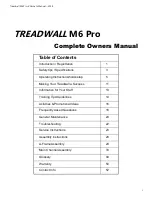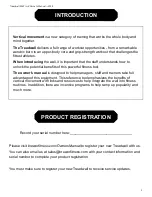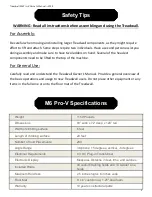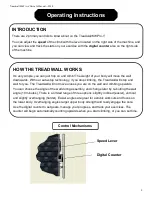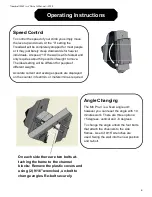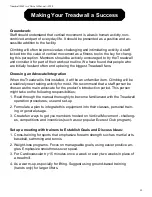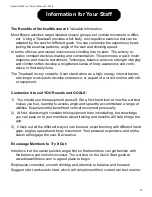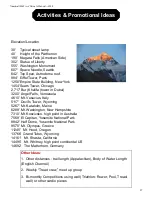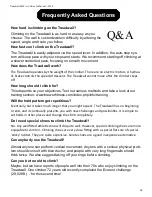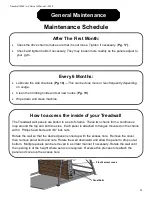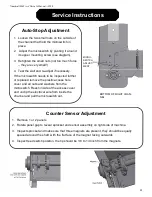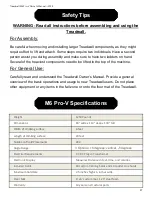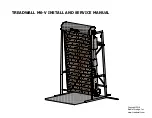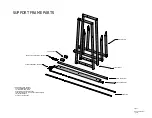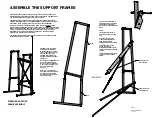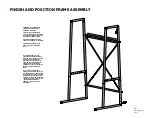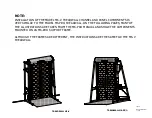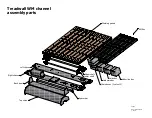
11
Treadwall M6 Pro-V Owner’s Manual—2018
Making Your Treadwall a Success
Groundwork:
Staff should understand that vertical movement is a basic human activity, non-
contrived and part of everyday life. It should be presented as a positive and ac-
cessible addition to the facility.
Climbing will often be perceived as challenging and intimidating activity. A staff
locked into the value of vertical movement as a fitness tool is the key for chang-
ing this perception. Members should be actively encouraged to try the Treadwall
and consider it for part of their workout routine. We have found that people who
are initially hesitant often end up being the biggest Treadwall fans.
Choosing an Advocate/Integration
When the Treadwall is first installed, it will be an unfamiliar item. Climbing will be
a relatively new training activity for most. We recommend that a staff person be
chosen as the main advocate for the product’s introduction period. This person
might take on the following responsibilities:
1. Read through the manual thoroughly to become familiarized with the Treadwall
operation procedures, use and set-up.
2. Formulate a plan to integrate this equipment into their classes, personal train-
ing or general usage.
3. Create fun ways to get you members hooked on Vertical Movement - challeng-
es, competitions and incentives (such as our popular Everest Club program).
Set up a meeting with trainers to Establish Goals and Discuss Ideas:
1. Cross-training for sports that emphasize forearm strength such as martial arts,
baseball, swimming and tennis.
2. Weight-loss programs. Focus on manageable goals, using easier positive an-
gles. Emphasize smoothness over speed.
3. For Cardiovascular try 15 minutes once a week or every two weeks in place of
a treadmill.
4. As a warm-up, especially for lifting. Suggest using ground-based training
(hands only) for larger lifters.


